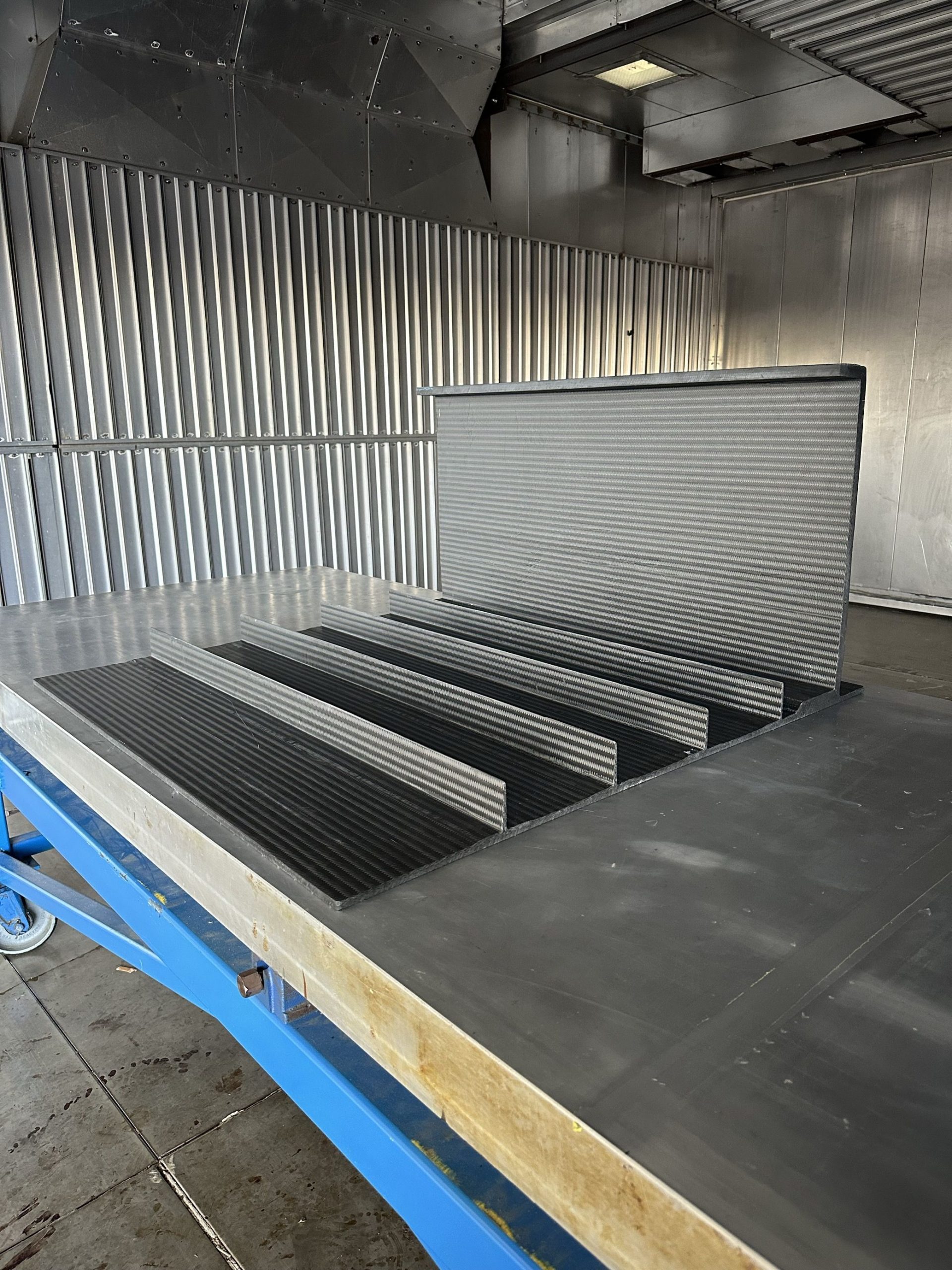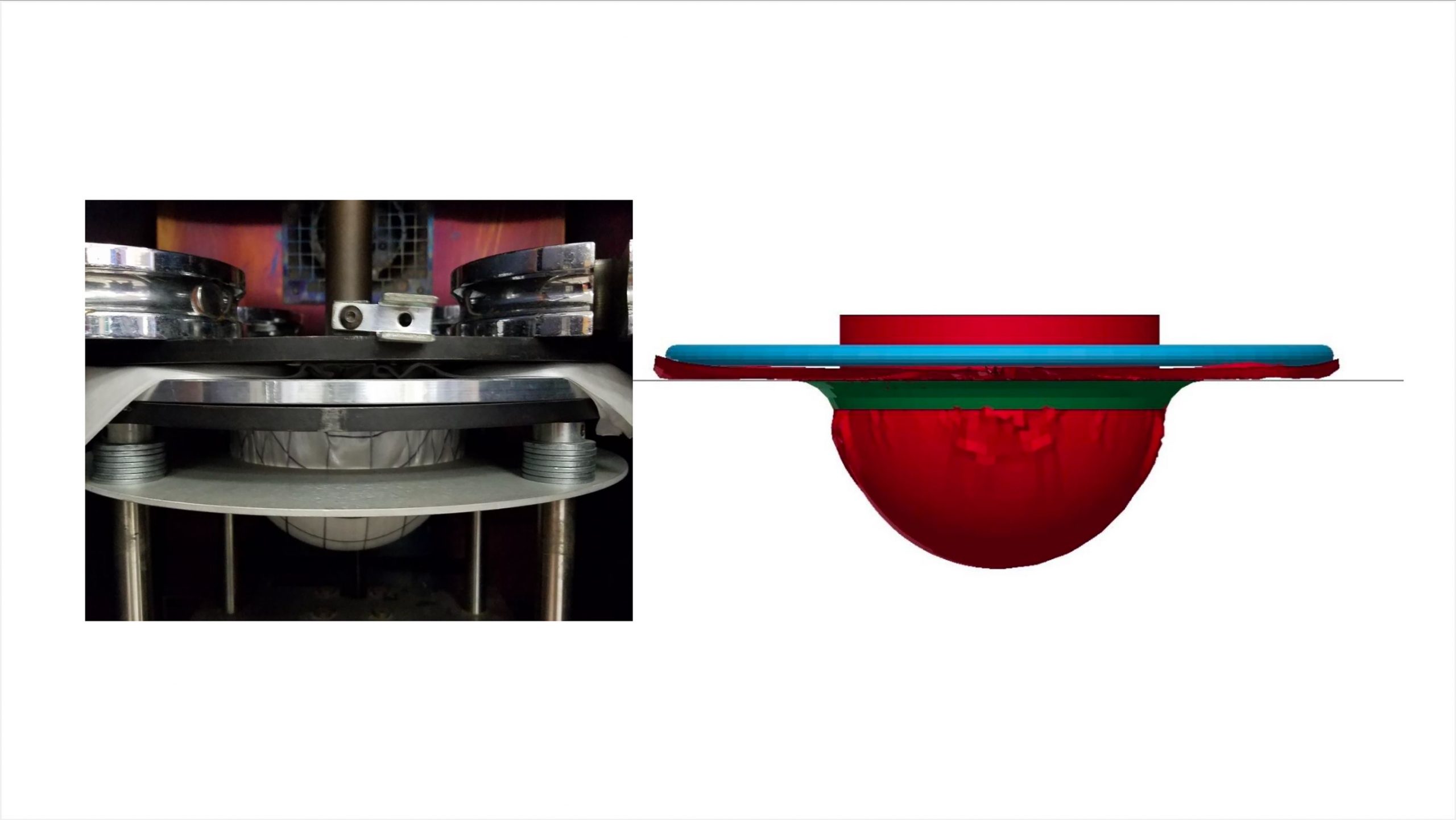In February 2023, the National Science Foundation launched the Accelerating Research Translation (ART) program, designed to encourage faster translation of university research into practical applications. That goal is embraced by many researchers in the composites field.
The three projects profiled in this issue highlight how work that’s currently being conducted in university laboratories could affect the role of composites in aerospace, transportation and other markets in the not-too-distant future.
Stitching Strengthens Aerospace Components
School: Mississippi State University
Location: Starkville, Miss.
Principal Investigator: Wayne Huberty
Researchers at Mississippi State University’s Advanced Composites Institute (ACI) are involved in a multi-year, Federal Aviation Agency-funded project to quantify the advantages and disadvantages of using stitched resin infusion (SRI) composites for aerospace components. Their work, funded through 2025, will help determine if SRI technology is suitable for the next-generation, fuel-saving blended wing body (BWB) aircraft, which have no clear division between the wing and the body.
In SRI, a robot uses thread made from Kevlar®, astro-thread, quartz and glass fiber or carbon fiber to stitch through layers of dry fabric at the joining point on a part, which is then infused with resin. This process reduces or eliminates the need for bolting or bonding sections together, which makes assembly easier. ACI researchers have been studying SRI through multiple research programs since the Boeing Corporation donated equipment for the technology to the university in 2015.
Researchers have found that SRI can arrest the delamination of composites, enabling the production of thinner, lighter aircraft structures, according to Wayne Huberty, ACI associate director. Composite components made using SRI technology could also be used in the construction of a pressurized fuselage, which is an integral part of a BWB aircraft’s design. When a large SRI composite box structure was tested in NASA’s Combined Load Test Systems (COLTS) program in 2015, the stitching helped prevent stress-induced tears or holes in the box from spreading.
For the current project, ACI researchers are building both unstitched and stitched structures (t-stiffeners for airplane wing skin) in three sizes: 4 x 4 feet, 7 x 5 feet and 16 x 4 feet. They are using non-crimp fabrics with amine epoxy resins and out-of-autoclave processing (resin transfer molding and vacuum-assisted resin transfer molding), as well as thermoset additive manufacturing. The team will compare the performances of the stitched and unstitched components and examine how changes in the manufacturing processes, including different stitches and stitching materials, will affect microcracking.
Introducing a new technology like SRI into the aerospace market can be a huge challenge. “Currently prepreg dominates the market, and any changes to resin infusion would require capital and training,” says Huberty. The extra manufacturing step of making the preform could discourage adoption, although the overall manufacturing process is expected to be more rapid and economical because it uses resin infusion. But the benefits of SRI could outweigh any disadvantages.
ACI researchers will also be working on further development of the BWB jet with aircraft manufacturer JetZero and the National Institute for Aviation Research under a Fueling Aviation’s Sustainable Transition (FAST) grant from NASA. The team will “develop key enabling technologies required to bring blended wing body technology to the market, primarily lightweight composite structures capable of supporting a non-cylindrical pressure vessel and producible at rates required to meet market demand,” according to NASA.
Researchers at Mississippi State University’s Advanced Composites Institute (ACI) are comparing performance differences between unstitched model components and those produced using stitch resin infusion (SRI). Photo Credit: Wayne Huberty
Improving the Combat Helmet Forming Process
School: University of Massachusetts Lowell
Location: Lowell, Mass.
Principal Investigator: James Sherwood
Using finite element modeling, UMass Lowell researchers James Sherwood and Kari White have determined how changes in production setups can improve the forming – and ultimately the performance – of thermoplastic combat helmets for the U.S. Army.
To manufacture helmets, layers of thermoplastic laminates are transformed into a near-net shape preform, then consolidated into a final part with matched dies under high heat and high pressure. Over the past two decades, university researchers have studied how the wrinkles that reduce the impact resistance of helmets develop during production.
They have also looked at another variable: thickness variations in individual preforms. Thinner areas in preform show poor-quality consolidation and voids that could also impact helmet performance. Researchers at UMass Lowell want to find ways to limit those variations.
“The main objective is to try to find the processing conditions that will give us thicknesses that are as uniform as possible across the section,” says James Sherwood, dean of the Francis College of Engineering at UMass Lowell.
“Using the finite element simulation, we can see where wrinkles will form and we can see how the models are deforming – where the material is stretching, where the thickness changes are,” says Kari White, assistant teaching professor in the university’s Department of Mechanical Engineering. The researchers successfully validated the model by checking its results with those achieved in two experimental setups. One used a single layer of laminate to form the helmet shape. The second, designed to test newer materials that have come on the market, can handle multiple layers and higher pressures for forming.
“The virtual simulation allows us to put in different materials to see how they will respond to different processes and parameters. What happens if we change the shape of the tool? If we increase the pressure, or if we change the binder gap between the materials and the tooling?” says White. In preliminary studies, researchers found that both the size of the binder gap and the die radius can influence the thickness uniformity and wrinkle formation in the preform.
It isn’t possible to eliminate all wrinkles. “However, by changing the pressure distribution around the ring binder, we can maybe push the wrinkles into a location that’s going to be less compromising to the performance of the helmet,” Sherwood says.
The overall objective of the project was to develop a virtual framework for helmet design, he adds. “As new materials become available, we can model the forming process and see how this material is going to form, rather than actually making and testing helmets,” says Sherwood.
Building an experimental setup for helmet forming (left) enabled the research team at the University of Massachusetts Lowell to validate the virtual model (right). Photo Credit: Kari White
Converting Composite Waste into Panelized Products
School: University of Tennessee, Knoxville
Location: Knoxville, Tenn.
Principal Investigator: Uday Vaidya
Researchers at the Fibers and Composites Manufacturing Facility (MCMF) at the University of Tennessee, Knoxville (UTK) helped refine and test a new technology that transforms composite waste into lightweight, durable panels. Their work was part of a project funded by IACMI – The Composites Institute.
South Carolina-based GreenTex developed the recycling technology, which uses leftover composite materials from a variety of sources: manufacturing waste such as dry chopped fiber tows, loose fibers, shredded fibers from fabric textile operations, cured/semi-cured prepregs and fully cured composite waste from aircraft, automobiles, wind blades, boats and pressure vessels. The waste is sorted and shredded, then spread in various combinations into a mold before being infused with vinyl ester resin and compressed. The resulting panels could replace plywood or Luan flooring in shipping containers and trailers, providing the same strength as wood but at a much lighter weight.
UTK researchers collaborated with Jay Holmes, GreenTex president and CEO, to take the technology to the next level. “There were a lot of large-scale studies involved to prove out the manufacturing side of it and to understand the upper and lower property bounds for tensile, compression and flex impacts,” says Uday Vaidya, director of MCMF and UT-ORNL Governor’s Chair in Advanced Composites Manufacturing. Their tests helped determine the optimal temperatures, cycle times and pressures for panel production.
The team also tested different ways to lay out the panels. They found, for example, they could create a sandwich panel using chopped waste foam from wind blades or lower density fibers for the core, with fiberglass, carbon fiber, aramid fiber edge trimmings or offcuts used for face sheets.
Researchers tested both thermoset and thermoplastic resins. “With thermosets you can use infusion, and they flow more readily. Thermoplastics will give you more toughness and impact strength,” says Vaidya. The choice will depend on what the panel will be used for and what is required in terms of appearance and impact resistance.
During the study, researchers were able to scale up the panels from 4 x 4 inches to 4 x 4 feet. “That was a very significant scale up because it showed that this actually could be the type of panelized product that GreenTex is looking for,” says Vaidya. Holmes is now working with an equipment manufacturer in Germany on large-scale (4 x 8 foot) panels and is going to set up domestic production of the panels.
Due to the efforts of UTK researchers and the rest of the IACMI team, GreenTex is now in a better position to move its composite waste panels from the research laboratory to the commercial market.
Panels made from a variety of recycled composite waste were tested by researchers at the Fibers and Composites Manufacturing Facility (MCMF) at the University of Tennessee, Knoxville. The appearance of the panels reflects the types of waste composites used in their manufacture. Photo Credit: Georges Chahine
Mary Lou Jay is a freelance writer based in Timonium, Md. Email comments to mljay@comcast.net.




